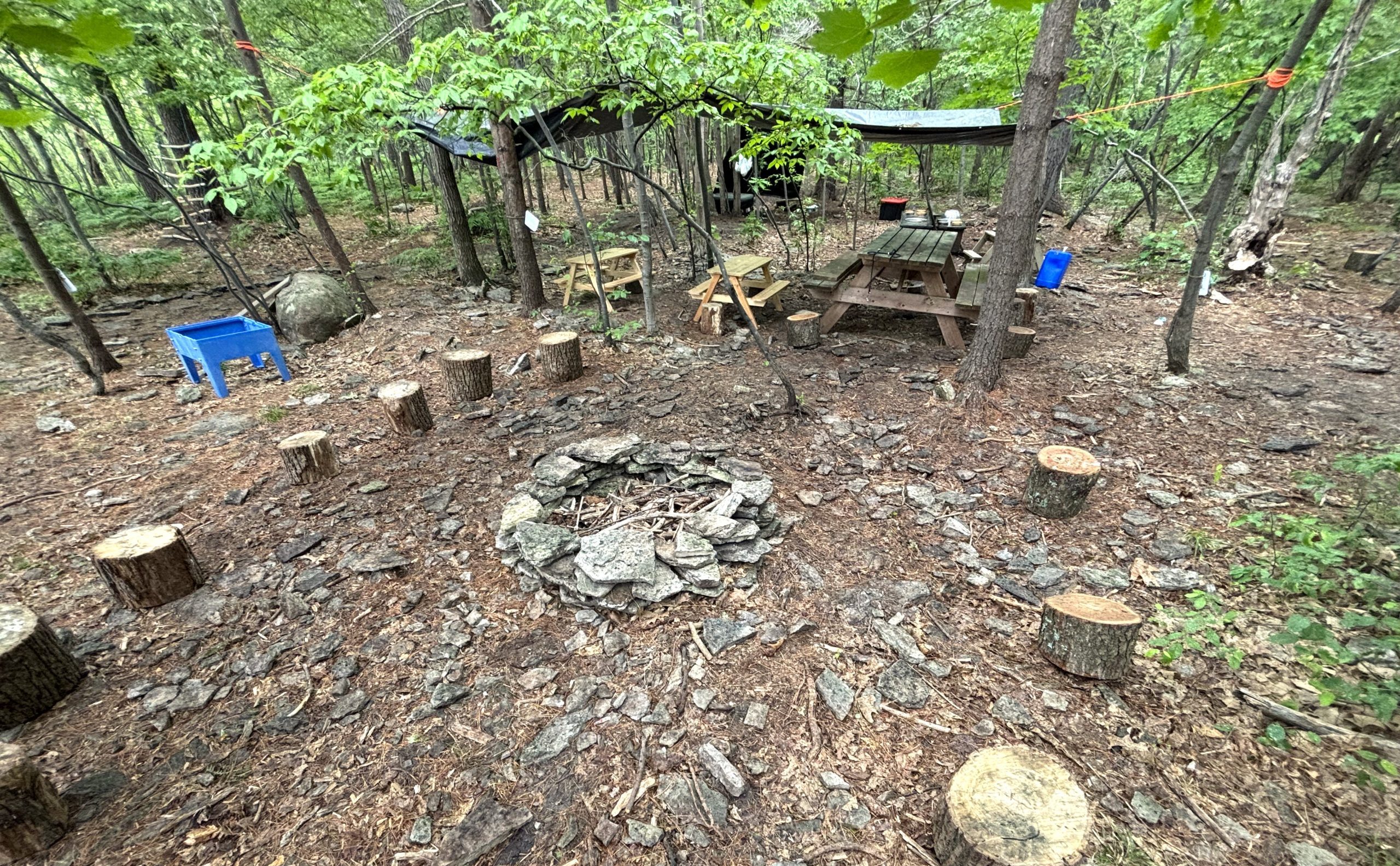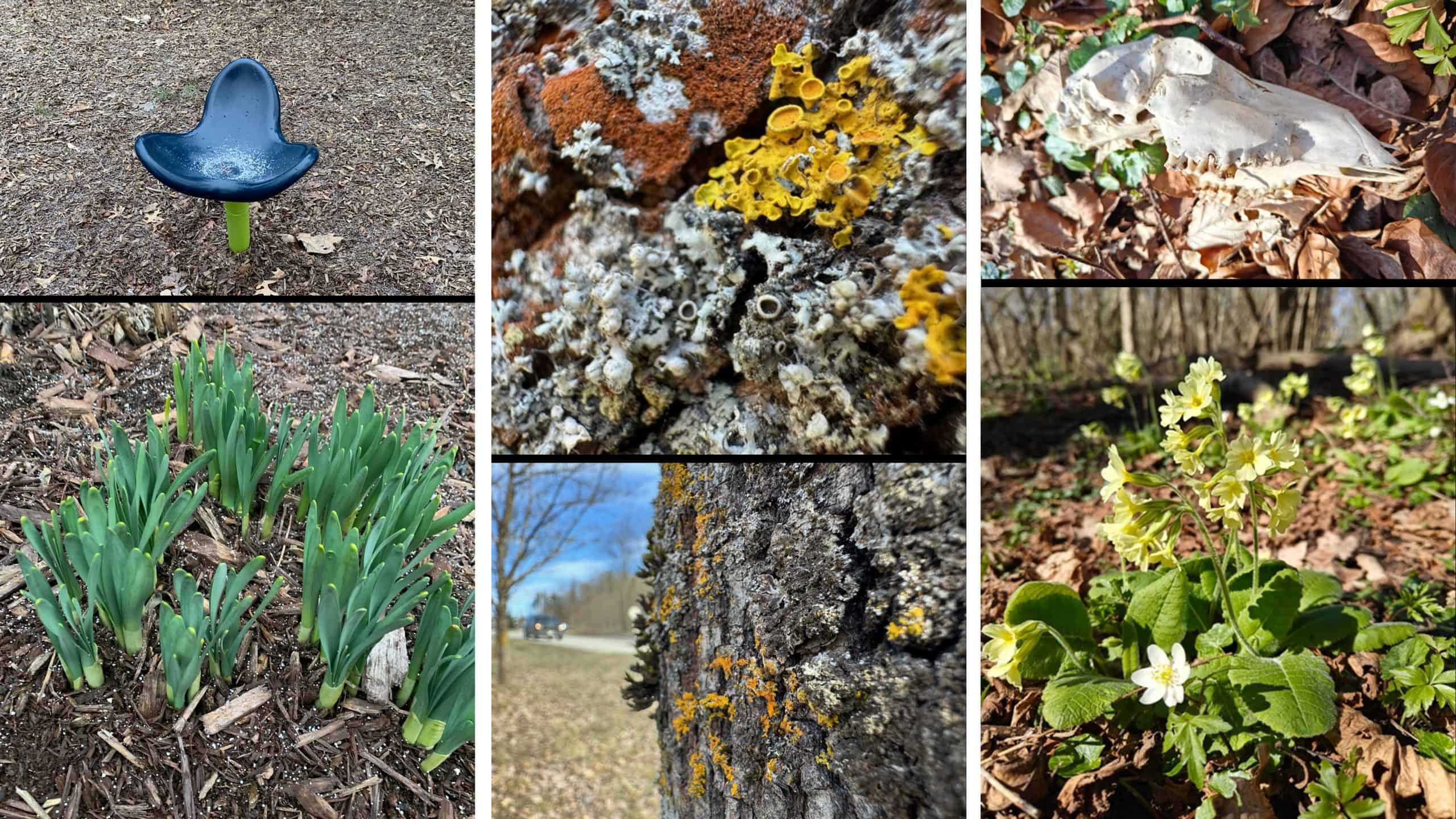
A global PhD network for research and collaboration: Connecting children to land, place, and nature – Part III
Thank you to current and former PhD Students Anastasia Bengry, Katrine Bergkvist Borch, Kirsten Føns, Trude Iversen, Gabriele Lauterbach, Kassandra L’Heureux, Marie C. Vermund, and researchers Karen Seierøe Barfod, PhD (VIA University College) and Mads Bølling, PhD (Center for Clinical Research and Prevention) for providing this post on behalf of the international network of PhD Students in School-based Outdoor Learning and Teaching.
Part III – How do we cultivate a sense of connection—to place, to nature, and to each other—in increasingly diverse and ecologically challenged educational settings? This third and final blog post explores three research perspectives that address this question from different angles. In closing, we reflect on how the PhD network itself offers a model for future collaboration in outdoor learning research.
The first blog post can be found here. The second blog post can be found here.
A shared challenge across outdoor learning contexts is the need to move beyond instrumental understandings of nature and place. As climate change, cultural diversity, and educational inequality reshape how we think about learning environments, researchers are asking: how can education foster relationality—a sense of belonging to the natural world, to local places, and to inclusive learning communities?
In this post, we present three research perspectives that each, in their own way, respond to this question. Whether through aesthetic experience, nature-based learning rooted in connectedness, or culturally and place-responsive pedagogies, these approaches reframe outdoor learning as more than a method. They position it as a relational practice that nurtures care, awareness, and engagement in a time of uncertainty.
Nature of wonder: Aesthetic learning outdoors
Trude Iversen (University of Stavanger), Katrine Bergkvist Borch (University of Southern Denmark), and Kassandra L’Heureux (Université de Sherbrooke).
An area of research in the network is aesthetic learning. Aesthetic learning outdoors is about (re)gaining competencies in noticing beauty as well as harshness in outdoor surroundings (Wickmann et al., 2022), and engaging oneself through aesthetic processes – getting to know nature through all senses and through embodied experience (Dewey, 1934/1980). Aesthetic approaches in the outdoors can support transformative learning, making the process both meaningful and continuous (Manni et al., 2017). One way to approach this field of research is by enacting the very practice being studied.
Contrasts in Nature. Three Places, One Moment. The photos were taken at the exact same time, in three different locations (left to right): Canada (QC), Norway, and Denmark. Each spot is approximately a five-minute walk from the scholars’ home offices. © Photos: Kassandra L’Heureux, Trude Iversen and Katrine Bergkvist Borch
For the case of this blog post, aesthetic learning was both explored and expressed in a collaborative experiment of walking–photographing–writing–talking (Lee, 2019).
Early in the morning in Canada and at midday in Denmark and Norway, they each walked for five minutes, stopped, took five photographs, and wrote for five minutes. They then met in a virtual space across time zones to share and reflect. Their conversations circled around the concept of wondering—the sensory and emotional experience of being in place and part of it (Ross, 2001). They wondered about wondering, about time and nature, and how awareness sharpens in stillness. When pausing, they noticed the wind, the sounds, the feeling of presence—what might be called nature awareness.
This shared process highlights how aesthetic learning is not only a theoretical concept, but a lived, relational practice—deepening attentiveness, presence, and connection to the more-than-human world. This interactive ontological and epistemological position is reflected in both research methods and outcomes—and for instance in practice through the use of aesthetic processes in outdoor settings during school days developing sustainability-oriented didactic approaches in early childhood education.
Nature-based learning: Connecting children with land and nature
Anastasia Bengry (University of Derby), Kirsten Føns (Ilisimatusarfik – University of Greenland), and Marie C. Vermund (University of Copenhagen)
Nature-based learning highlights how educational practices can strengthen children’s relationship with the natural world.
Drawing on Indigenous perspectives such as Learning with the Land and Land-based Education (Harrison & Skrebneva, 2020; Illeris et al., 2024), Land is seen not just as context but as a co-educator, fostering cultural, spiritual, and physical connections.
Parallel to Indigenous perspectives, research on Nature Connectedness (Capaldi et al., 2014) frames this relationship as a psychological need—rooted in the biophilia hypothesis (Kellert & Wilson, 1993)—which supports well-being and encourages environmental care.
Practices like school gardens exemplify how everyday outdoor education can activate children’s connection with Land and nature. As students, children engage with ecosystems through planting, composting and observing growth cycles, which promotes ecological literacy and sustainable habits (Dillon et al., 2005; Graham et al., 2016; Liu et al., 2017). Together, these approaches signal a shift in outdoor learning research—from viewing nature as merely a backdrop or setting for activities, to understanding nature as a relationship: something to belong to, learn with, and care for.
Place-based and culturally responsive perspectives on EOtC
Kirsten Føns (Ilisimatusarfik – University of Greenland) and Gabriele Lauterbach (University of Stavanger)
With respect to Indigenous students, research shows that they benefit especially from culturally responsive pedagogy, realized in Land-based and place-based learning as well as learning with the Land (Castagno & Brayboy, 2008; Føns, 2022; Føns, 2025; Harrison & Skrebneva, 2020; Illeris et al., 2024; Stansberry et al., 2023). These approaches combine Indigenous and Western knowledge, incorporating hands-on activities and traditional uses of nature into the curriculum. To include the students’ own culture and local issues in school can make learning more authentic and relevant for them, foster engagement and persistence, and fulfill students’ basic psychological need for autonomy, competence, and relatedness (Lauterbach et al., 2023; Føns, 2022; Ryan & Deci, 2000).
As classrooms worldwide are getting more and more diverse, teachers must adapt their methods to create safe spaces for all students, especially those from different cultural backgrounds.
Thus, our research connects two academic discourses: (1) basic psychological needs satisfaction, as described in Self-Determination Theory (SDT), seen through the lens of Ecological Psychology (EP) (Lauterbach, 2023) and (2) inclusive schooling via culturally and place-responsive teaching (Lauterbach et al., 2023; Føns, 2022). This includes using the local community (Sobel, 2013), natural affordances (Gibson, 1969; Gibson, 1979) and the students’ own cultural references (Gay, 2010) as a starting point for learning.
Future perspectives for the network
The network was established to create a meaningful and sustainable space for PhD students in outdoor learning research. While it has already proven valuable, its initiators have considered how it can evolve through formalized mentoring, senior researcher involvement, sustainable funding, and broader interdisciplinary connections, particularly within fields like sustainability education and nature-based learning. Putnam’s (2015) concept of bonding and bridging social capital helps explain how the PhD network has fostered both academic collaboration and overlapping research interests, as reflected in the respective projects.
The purpose of these three blog posts has not been to exemplify specific instances that support a sense of belonging, but rather to highlight it as a key mechanism driving academic collaboration. However, what is clear is the bonding aspect that lies in the strengthened connections among PhD students in school-based outdoor learning, fostering a shared academic space where research topics, methodologies, and theoretical perspectives intersect. Within this space, students can not only exchange knowledge but also share both their enthusiasm and challenges, creating a supportive and collaborative research environment. At the same time, the bridging function extends school-based outdoor learning research to related fields, fostering interdisciplinary exchange. This dual dynamic not only enriches individual research projects but also contributes to the broader advancement of the field.
As it is expected that the network will continue to grow, its strength will lie in maintaining this balance—deepening connections among PhD students while expanding outward to their respective research environments. By fostering both academic rigor and a strong sense of community, it has the potential to shape the future of research in school-based outdoor learning, creating a foundation for lasting scholarly engagement and innovation.
References
Capaldi, C. A., Dopko, R. L., & Zelenski, J. M. (2014). The relationship between nature connectedness and happiness: A meta-analysis. Frontiers in Psychology, 5, 976.
Castagno, A. E., & Brayboy, B. M. K. J. (2008). Culturally responsive schooling for indigenous youth: A review of the literature. Review of Educational Research, 78(4), 941–993.
Dewey, J. (1980). Art as experience. Perigree. (Original work published 1934)
Dillon, J., et al. (2005). The value of outdoor learning: Evidence from a study of school gardens. International Journal of Educational Research, 43(1–2), 33–43.
Føns, K. (2022). Kulturtraditioner, jagt og naturbrug i en grønlandsk specialklasse – udeskole der motiverer. Pædagogisk Psykologisk Tidsskrift, 4, 27–46.
Føns, K. (2025). Place, culture and learning: a review to inform education outside the classroom in Greenland. Journal of Curriculum Studies, 1–27. https://doi.org/10.1080/00220272.2025.2531376
Gay, G. (2010). Culturally responsive teaching: Theory, research, and practice (2nd ed.). Teachers College Press.
Gibson, E.J. (1969). Principles of perceptual learning and development. Appleton-Century-Crofts.
Gibson, J. J. (1979). The ecological approach to visual perception. Houghton Mifflin.
Graham, P., et al. (2016). Environmental education and school gardens: A new approach to teaching sustainability. Environmental Education Research, 22(5), 682–698.
Harrison, N., & Skrebneva, I. (2020). Country as pedagogical: Enacting an Australian foundation for culturally responsive pedagogy. Journal of Curriculum Studies, 52(1), 15–26.
Illeris, H., Fossnes, A.-M., & Anundsen, T. W. (2024). Landtimescaping with Rossedalen: A/r/tographic fieldwork with a landscape in Southern Norway. Nordic Journal of Art & Research, 13(3), 1–28.
Kellert, S. R., & Wilson, E. O. (Eds.). (1993). The biophilia hypothesis. Island Press.
Lauterbach, G. (2023). “Building Roots”—Developing agency, competence, and a sense of belonging through education outside the classroom. Education Sciences, 13(11).
Lauterbach, G., Fandrem, H., & Dettweiler, U. (2023). Does “Out” get you “In”? Education outside the classroom as a means of inclusion for students with immigrant backgrounds. Education Sciences, 13(9).
Lee, N., Morimoto, K., Mosavarzadeh, M., & Irwin, R. L. (2019). Walking propositions: Coming to know A/r/tographically. International Journal of Art & Design Education, 38, 681–690.
Liu, S., et al. (2017). Educational gardening programs and their impact on sustainability awareness in children. Environmental Education Journal, 33(2), 152–167.
Manni, A., Ottander, C., & Sporre, K. (2017). Young students’ aesthetic experiences and meaning-making processes in an outdoor environmental school practice. Journal of Adventure Education and Outdoor Learning, 17(2), 108–121.
Putnam, R. D. (2015). Bowling alone: America’s declining social capital. In The city reader (pp. 188–196). Routledge.
Ross, S. (2001). The geography of awe and wonder. Teaching Geography, 26(2), 86–88.
Ryan, R. M., & Deci, E. L. (2000). Self-determination theory and the facilitation of intrinsic motivation, social development, and well-being. American Psychologist, 55(1), 68–78.
Sobel, D. (2013). Place-based education: Connecting classrooms and communities (2nd ed.). Orion.
Stansberry, S. L., McDowell, S. B., Ivey, T. A., Hathcock, S. J., Utley, J., Gardner-Vandy, K. G., & Just, A. (2023). A systematic mapping study of place- and land-based learning with Indigenous populations in K-12 STEM education. Journal of Formative Design in Learning, 7(2), 158–170.
Wickmann, P., Prain, V., & Tytler, R. (2022). Aesthetics, affect, and making meaning in science education: An introduction. International Journal of Science Education, 44(5), 717–734.


